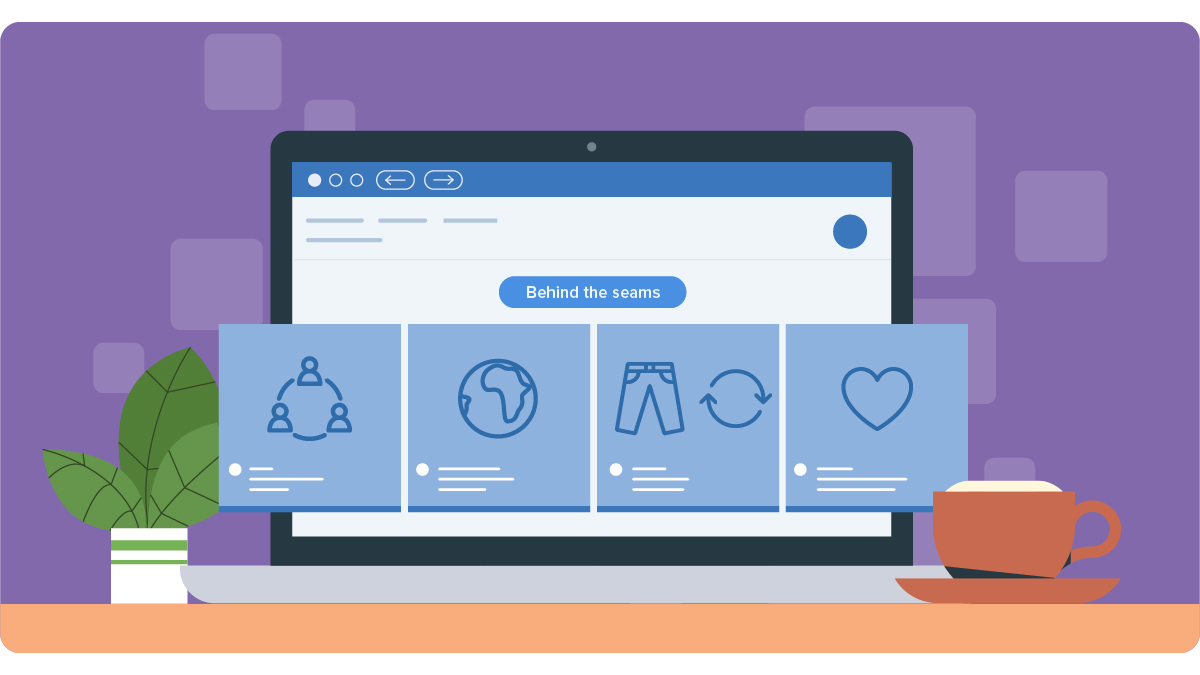8 things you should consider when creating an online store

Megan
4 Aug, 2021
If you were looking for a sign to sell your products online, consider this it. As the pandemic continues to affect our lives, more people are turning to online stores as a safe and convenient way to shop. According to the results of a Masterpass survey, 68% of respondents’ online shopping habits increased since the onset of the pandemic – 56% of them bought clothes, and 54% bought groceries.
The best part of of creating an online store to sell your products is the potential to reach a larger audience. To do that, you need to create an online store that’ll entice potential customers. Thanks to some nifty ecommerce platforms, you don’t need to search for a willing developer to create your online shop. It’s entirely possible to do it yourself.
Read more: 10 side hustle ideas you can turn into a small business
Figuring out where to start can be an overwhelming experience. Which is why we’ve put together this list that details the building blocks of an online store.
1. Choose the right domain name
Your domain name is the web address of your online store. It’s where potential customers will visit you online. Make it easy for your customers to find you by using your business name as your domain name. If the domain name is already taken, choose a domain name that’s as close to your business name as possible. If you have yet to choose a business name, it’s a good idea to check if the corresponding domain name is available before making your selection.
When creating an online store, choose a domain name that’s unique, but is easy to say out loud and easy to remember. If customers struggle to spell your domain name, they’ll have difficulty finding you on the web.

2. Select an ecommerce platform
You no longer need to be a developer to create a beautifully designed, fully-functional online store. There are ecommerce website’s that make the process simple enough for anyone to do themselves.
Since your ecommerce platform forms the backbone of your online store, clearly consider what your needs are before settling on a platform. When deciding which platform to select, consider these factors:
- Ease of use. Will you be able to build the store yourself, or do you need a developer to help you?
- Price. Does it suit your budget?
- Payment gateways. What payment options does it allow you to offer your customers?
- Design customisation. Are you able to design your website the way you want to, or change aspects of the templates?
Here are some good options you can consider: WooCommerce, Magento, OpenCart, Shopstar, Nimbl, Ecwid, Shopify, Squarespace, and Wix.
Read more: 4 easy-to-use ecommerce platforms you can use to build your online store
Decide how you’ll accept payments
A seamless checkout process is the best way to ensure your customers actually purchase the products they’ve been eyeing. Part of that checkout process is having a convenient payment method.
The easier the payment process is, the more likely they are to make the purchase, and return to your online store in future. SnapScan has integrations with ecommerce platforms WooCommerce, Magento2, OpenCart and Shopstar. You can also use our API to create your own custom integration. With SnapScan, your customers won’t need to load their details onto yet another website. Instead they can scan your SnapCode, and pay using their app.
Because customers’ preferences vary, it’s important to offer a variety of options to ensure your customers will find an option they’re comfortable with. Include options for customers to pay by card, or to do an instant EFT. Our free WooCommerce plugin now also accepts card payments for customers who prefer to pay by card, and don’t have the SnapScan app on their phone.

4. Pick a reliable shipping method
You can have a beautifully designed website, and sell amazing products, but if your products don’t reach your customers the way they’re meant to, it will ruin your customers shopping experience.
When it comes to mapping out a shipping strategy, there are several factors you should consider such as cost, geographical reach, delivery time, reliability and services offered. Choose a courier company that suits your business needs best.
Once you’ve decided on a courier company, you can set up shipping terms for your customers that includes which areas you’re delivering to, whether they can pick up from a selected point, what it would cost them, and what your policy is on returns. Remember, it’s much easier to sell something to a returning customer who’s had a good experience than a new customer – so make sure you focus on the entire shopping experience.
Read more: Feat.: weaving curiosity into every aspect of their business
5. Create smart content
Your online store needs to do more than list the products you sell. It needs to tell a compelling story of who you are, and why people should buy your products. Everything from your store’s design to the words you use to describe your products should reflect what your brand’s values are. Are you quirky, playful, serious or something else?
Make sure that your customers will have an enjoyable experience when browsing your online store. When creating an online store, make sure it’s visually appealing. Use high quality images to showcase your products.
Next, write descriptive copy that answers common questions your customers might have. On your home page, include a brief description of your online store and what you’re selling. On your ‘About us’ page, share your business’ story and why you’re selling the products you have listed. Share what makes your business unique to other stores they might encounter, and why they should buy from you instead.
Other important pages to include are ‘payments’, ’shipping’ and ‘refunds and returns’. Having this information on your website allows customers to make an informed decision when buying from you. It also helps negate any issues that might arise later.

6. Make sure your online store has good UX
The great thing about the internet: creating an online store is easier than ever. The flipside? It’s resulted in more competition. One way to stand out from the crowd is by providing your visitors with a good user experience (UX).
UX is about building a website that is easy for visitors to navigate. They should quickly be able to find your products, and figure out how to purchase them. Your site may be beautifully designed, but if visitors don’t understand how to navigate it, they’ll leave without making a purchase.
Good UX is therefore integral to your sales. By offering your site’s visitors a seamless and intuitive shopping experience, they’re more likely to make a purchase and return to make more purchases in future. Ask some friends to try to make a purchase on your site to test how easy it is, maybe get some older people who aren’t tech savvy to give it a go too. This will quickly show if you have any blindspots in how your site is structured.
Read more: 4 tips to easily optimise your online store
7. Optimise your site
There’s a reason why search engine optimization (SEO) has become increasingly popular. The higher search engines rank your site, the more likely it is that new visitors (and potential) customers will find your site. Focus on optimizing your online store from the start to encourage search engines to rank you higher.
Here are a few things you can do to boost your ranking over time:
- Identify applicable keywords. Use them in the copy across your site (titles, product descriptions, your home and about page and blog posts, if you have them).
- Optimise your site for mobile. Most people visit online stores from their mobile phone. In South Africa alone, over 31 million people used their phones to browse the internet in 2020. As a result Google tends to favour sites that have been optimised for mobile.
- Boost your site loading speed. Google wants to provide users with the best possible experience. Because customers prefer faster loading speed, Google will serve them sites with a faster loading speed.
- External links. When other sites link to your site, it builds up your website’s authority. It shows Google you’re a trusted site, which increases your chances of ranking higher.
8. Create a marketing plan
Once you’ve created your online store, you’ll need a strategy to lead potential customers to your website. While incorporating SEO into your online store will generate traffic for your site, it takes a while for you to rank high in search engine results.
A great way to market your online store is by making use of digital marketing strategies. Online marketing tools can help you generate new leads, increase your website’s traffic and garner potential sales. Some good digital marketing strategies include email marketing, social media marketing, content marketing and google display ads.
Read more: How to use Instagram to sell your products
Before you decide which tools to use, consider what your unique selling point is, and who your target audience is. This information will help you create content that converts your audience into customers.
You’re now loaded with all the information you need to create an online store. The next step? Turning your goal into reality. We believe in you, now go make that magic happen.
Related articles

4 tips to easily optimise your online store
Is the cart becoming the new Wishlist?

10 side hustle ideas you can turn into a small business
Use your skills to help you earn some extra income

How to use Instagram to sell your products
Capitalise on Instagram’s reach to sell your products to a larger audience.


